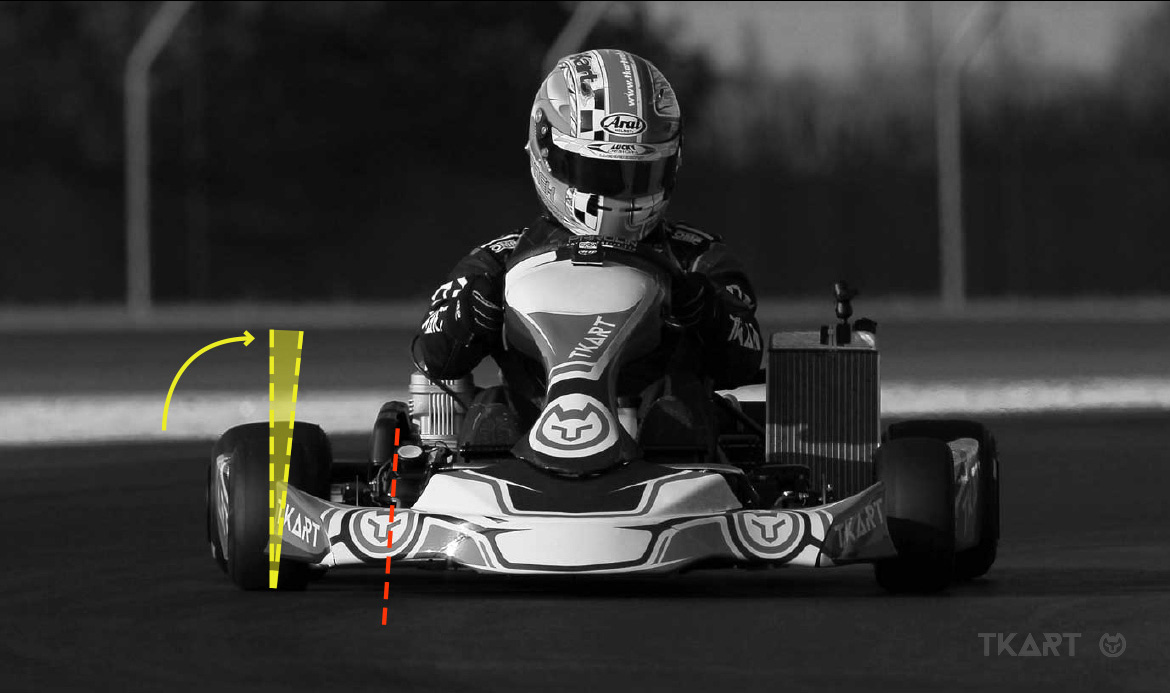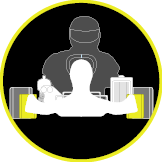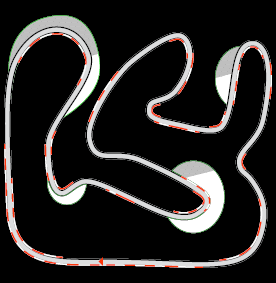With a negative camber (the blue curve on the engine rev graph) going into bends is not as good. The tendency is to brake more before the kart starts cornering or arriving so fast that it’s impossible to go into the bend at the correct moment, with the front-end sliding sideways and the loss of the ideal racing line around the bend. In fast left-hand bends (point 1), after braking there is an attempt to regain speed, but the front-end loses the racing line and the kart tends to go towards the outside. It is necessary to stop accelerating and the loss of time is evident.
The bend at point 2, on the other hand, is suited to a set-up with a light front-end, because it allows the front wheels to slip slightly and prevents a loss of rear-end grip. It is still necessary to corner early so that the kart goes in straight in the slight chicane that follows.
The next bend (point 3) highlights all the shortcomings of an imprecise front-end due to an overly negative camber. Although throttle-off occurs at exactly the same point as the neutral camber set-up, it is necessary to continue braking until after mid-bend to stay on the right racing line. At that point, the speed is slow and even if acceleration occurs quite quickly and sharply, about a tenth of a second is lost.
At the big right-hand bend (point 4), the racing line is partly lost when going into the corner, the driver tries to accelerate, but the kart moves too far towards the outside and the driver is forced to stop accelerating for a moment.
There is an excessive loss of revs during the bend at point 5 due to the impossibility of cornering at an ideal speed.
It is clear that, with more rubber on the track, having a smaller footprint may actually constitute an advantage.
 Exclusive Content
Exclusive Content



